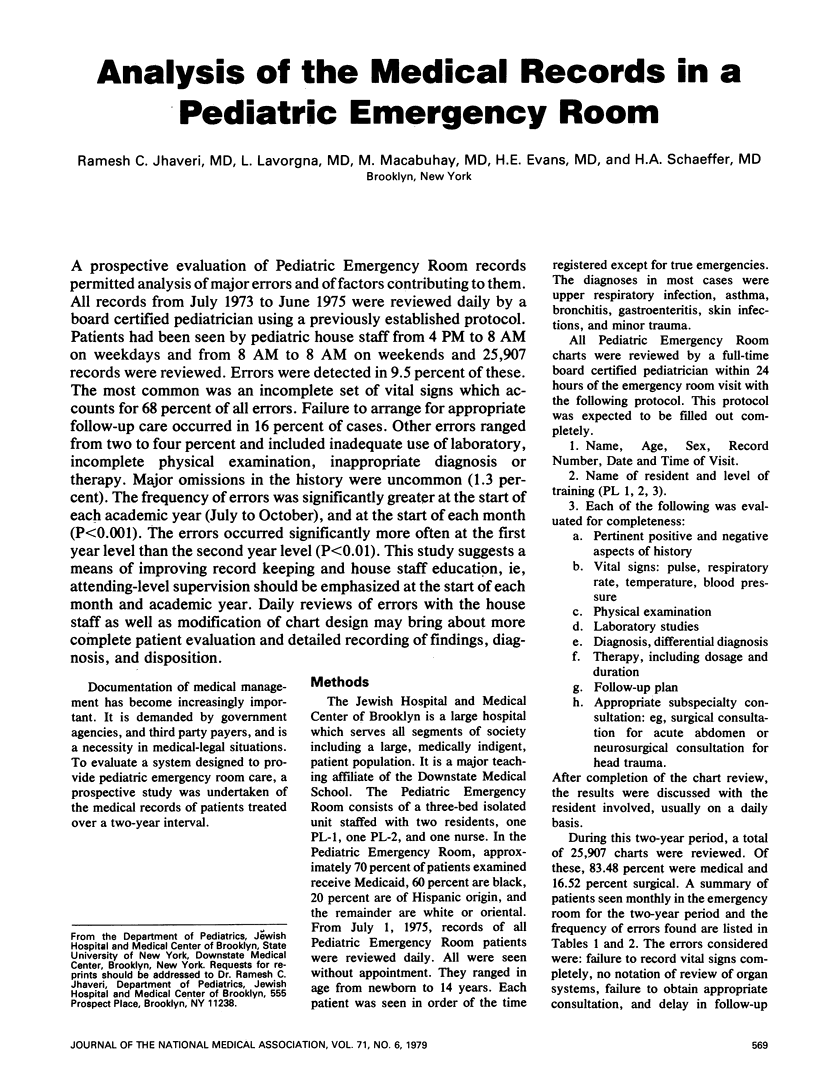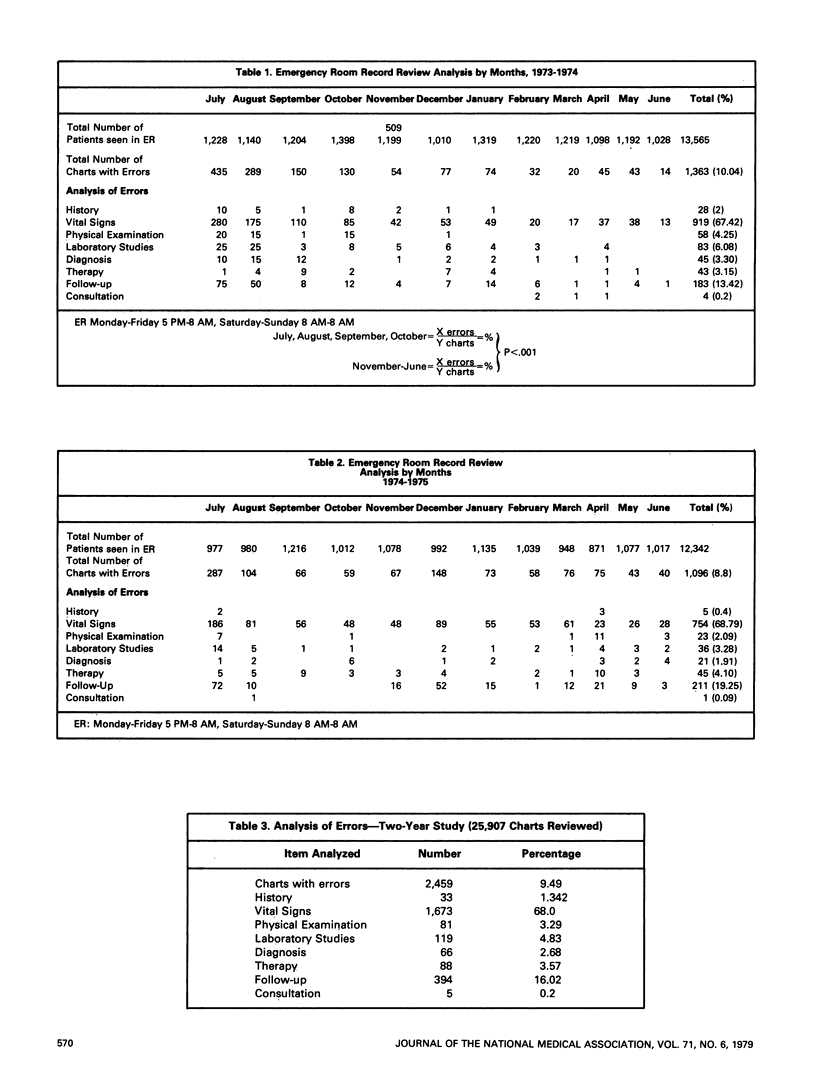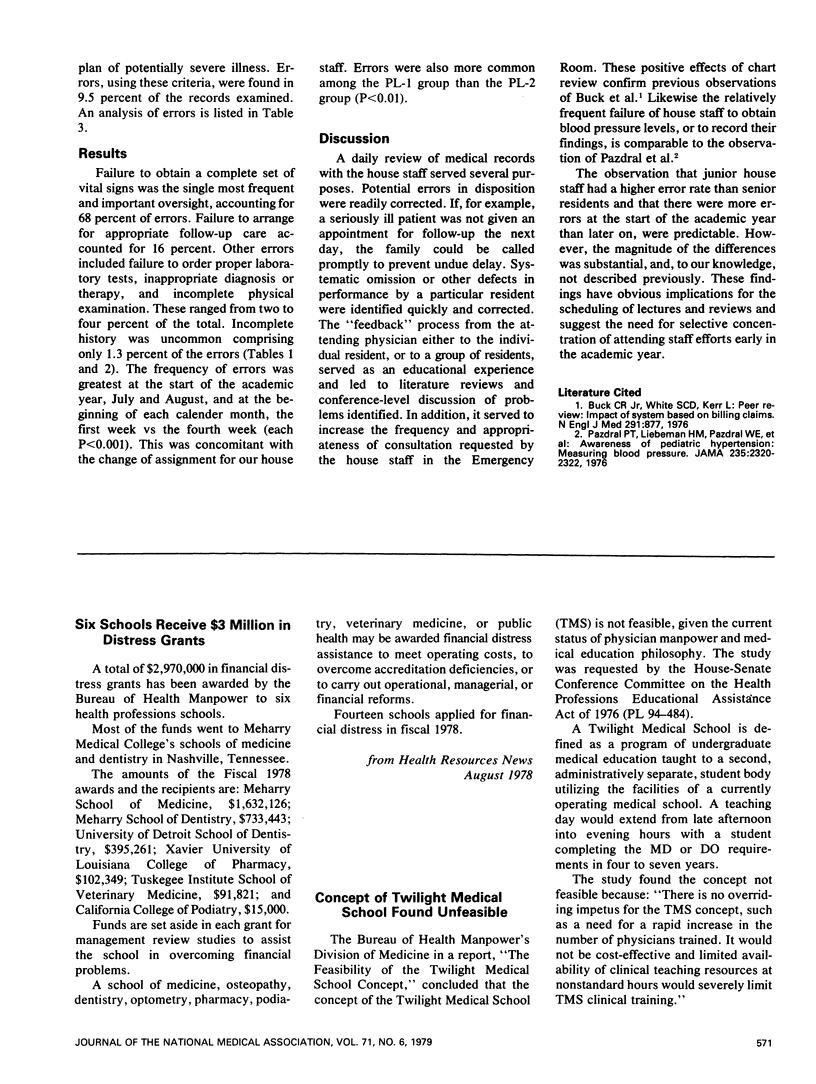Abstract
A prospective evaluation of Pediatric Emergency Room records permitted analysis of major errors and of factors contributing to them. All records from July 1973 to June 1975 were reviewed daily by a board certified pediatrician using a previously established protocol. Patients had been seen by pediatric house staff from 4 PM to 8 AM on weekdays and from 8 AM to 8 AM on weekends and 25,907 records were reviewed. Errors were detected in 9.5 percent of these. The most common was an incomplete set of vital signs which accounts for 68 percent of all errors. Failure to arrange for appropriate follow-up care occurred in 16 percent of cases. Other errors ranged from two to four percent and included inadequate use of laboratory, incomplete physical examination, inappropriate diagnosis or therapy. Major omissions in the history were uncommon (1.3 percent). The frequency of errors was significantly greater at the start of each academic year (July to October), and at the start of each month (P<0.001). The errors occurred significantly more often at the first year level than the second year level (P<0.01). This study suggests a means of improving record keeping and house staff education, ie, attending-level supervision should be emphasized at the start of each month and academic year. Daily reviews of errors with the house staff as well as modification of chart design may bring about more complete patient evaluation and detailed recording of findings, diagnosis, and disposition.
Full text
PDF


Selected References
These references are in PubMed. This may not be the complete list of references from this article.
- Buck C. R., Jr, White K. L. Peer review: impact of a system based on billing claims. N Engl J Med. 1974 Oct 24;291(17):877–883. doi: 10.1056/NEJM197410242911705. [DOI] [PubMed] [Google Scholar]
- Pazdral P. T., Lieberman H. M., Pazdral W. E., Neumann C. G., Lieberman E. Awareness of pediatric hypertension. Measuring blood pressure. JAMA. 1976 May 24;235(21):2320–2322. [PubMed] [Google Scholar]


